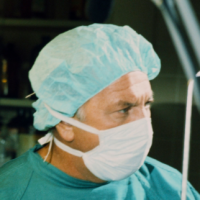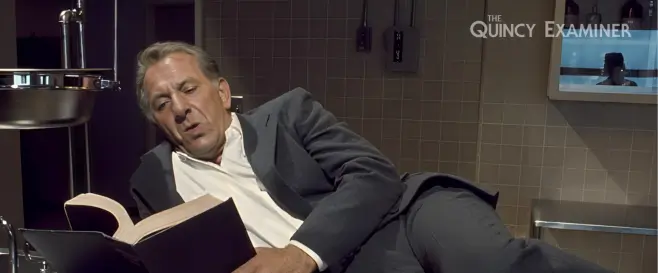From the grainy charm of old television stills to the studio-stamped backs that whisper stories from a different media era, vintage publicity photos are prized treasures for collectors, fans, and autograph seekers alike.
Whether you’re a nostalgia buff collecting classic press prints from Quincy, M.E., Columbo, or The Rockford Files, or you’re hunting down authentic images to send out for fan mail autographs, it’s important to know how to recognize the real deal—and avoid reprints dressed up as originals.
In this blog, we’ll show you what to look for, which sellers are reputable, and how to verify that you’re holding a true piece of TV history.
What Are Vintage Publicity Photos?
Vintage publicity stills—also known as press photos—were distributed by studios like NBC, CBS, or Universal in the 1960s–80s to promote TV shows and movies in newspapers, magazines, and trade publications.
These original prints were never sold to the public. They were sent to the press with typed captions glued to the back, and many have studio stamps like “PROPERTY OF NBC TV PHOTO.”
Because these images were made in limited quantities and often handled directly by journalists, each one carries unique aging marks, editorial notes, and studio provenance.
Real-World Example: Robert Ito from Quincy, M.E.
Take this listing from IMS Vintage Photos — an original press still featuring Robert Ito and Jack Klugman, stars of Quincy, M.E.
- 📆 Dated: circa 1980
- 🏷️ Source: NBC Television archives
- 🧾 Back includes: glued NBC caption, editorial wear, and “PROPERTY OF NBC TV PHOTO” stamp
- 📏 Size: approx. 12.9 × 10.1 cm
- 🔗 View the front image
- 🔗 And the back with caption
It’s a textbook example of an authentic press image—ideal for collectors or for those seeking legitimate photos to send out for celebrity autographs or fan mail.
Why These Photos Matter to Collectors & Fans
Vintage press photos aren’t just memorabilia—they’re tools for autograph collectors, too.
Because these were created and handled during the stars’ active years, they’re often used by:
- ✍️ Autograph seekers: Sending fan mail to stars or their agents
- 💬 Convention-goers: Getting photos signed at events or meet-and-greets
- 🎞️ Archivists and collectors: Preserving TV history in its original media form
When you send a photo like this to an actor (or their estate), it’s not only historically accurate—it often gets more attention than a generic print.
How to Tell It’s the Real Deal
✅ 1. Check the Back of the Photo
Genuine press photos often have:
- Typed captions glued or taped on
- Studio stamps (e.g., “NBC PHOTO ARCHIVE”)
- Date stamps (like “DEC 12 1978”)
- Editorial marks or handwritten crop lines
👉 If the seller doesn’t show the back, ask for it. A missing back photo is a red flag.
✅ 2. Look for Physical Aging and Details

These clues can’t easily be faked—unlike modern reprints that may look artificially “aged.”
Reputable Online Sellers
Here are a few vetted online sellers known for authentic vintage photos:
🛍️ IMS Vintage Photos
- Based in Sweden, with a deep archive of international and American press photos
- Most listings include both front and back images
- Highlights age, source, and editorial notes
🛍️ Historical Images (eBay)
- U.S.-based Shopify seller with thousands of original prints
- Offers high-resolution scans and condition notes
- Specializes in U.S. newspaper archives and studio promos
🛍️ Also Found On:
When shopping from any of these sources, compare with known archives such as Getty or NBCUniversal stills. A quick reverse image search can reveal if the photo is well-documented or widely available as a reprint.
What to Avoid
Watch for sellers offering “vintage-style” prints. These are not originals. Common red flags include:
🚫 Digitally printed backs
🚫 Bright-white paper with no yellowing
🚫 No studio stamps or glued captions
🚫 Modern inkjet printer dots under magnification
Final Tips for Buying
Before you buy:
✅ Ask for images of both front and back
✅ Cross-check the photo in Getty Images or Wikimedia Commons
✅ Look for signs of handling, stamps, and glued captions
✅ Buy from sellers who clearly state the image’s provenance
And if you’re buying to get a celebrity autograph, make sure the photo has some era authenticity—actors and agents tend to value originals more than freshly printed fan art.
Ready to Start Your Collection?
Whether you’re reliving childhood shows or building an autograph collection, original press photos bring unmatched authenticity to your media memorabilia.
Explore real vintage photos:
- 📸 IMS Vintage Photos – TV Listings
- 🧾 Historical Images on Shopify
- 🔍 Robert Ito / Quincy, M.E. on Getty

Chief online influencer of all things Quincy. Currently, I operate as a content creator & editor to The Quincy Examiner – Online Home to the godfather of all today’s forensic detective TV series. When time permits, I run the gauntlet with young and old family members as we surpass this post-COVID pandemic! I follow up with all communication but the social links below are probably the best way to find me quickly! Enjoy the site and come back again soon… that’s doctor’s orders! Be well!

No Comments Yet